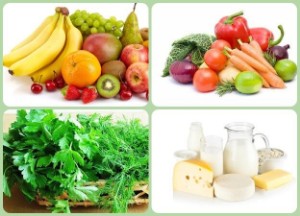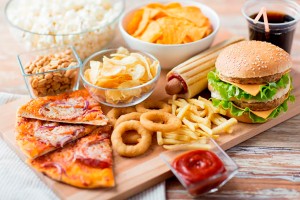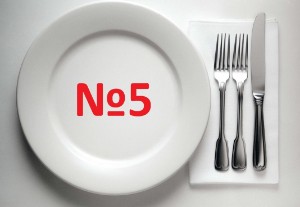What is possible and what is not allowed on a diet for liver health — table of products
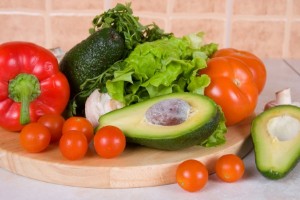 The liver is the most important gland of external secretion in the human body. It performs a number of important functions, including detoxification, synthesis of cholesterol and glucose, control of the amount of hormones, vitamins, ethanol, etc.
The liver is the most important gland of external secretion in the human body. It performs a number of important functions, including detoxification, synthesis of cholesterol and glucose, control of the amount of hormones, vitamins, ethanol, etc.
According to research, human liver health is directly related to the quality of his diet, bad habits, the amount of medications and alcohol taken. But despite such external vulnerability, this organ is capable of regeneration.
Research confirms ( 1 , 2 ) that certain dietary patterns are able to restore liver function, reduce the risk of developing many diseases and alleviate existing ones.
To stimulate recovery processes , you should adjust your daily diet by adding the right foods to it and eliminating harmful ones. The therapeutic diet described in this article is ideal for improving the liver and preventing diseases, and will also be useful for existing pathologies.
Content
9 general rules of nutrition
The rules of nutrition for a healthy liver are quite simple, the main thing is to go to the end and follow them all:

- No acid-forming products . Such dishes include various marinades, spicy and sour dishes, and preserves;
- Prohibition of alcohol . Alcoholic beverages are the main enemy of the liver. The amount of alcohol should be reduced to a minimum (if you do not have any pronounced liver pathologies) or removed from the diet altogether (if there are even minimal abnormalities in the gland). 6 effects of alcohol on the liver we have considered in a separate article, as well as Recovery methods ;
- We exclude products containing a large amount of dyes and fat. This is especially true for fried and grilled foods. The use of various purchased sauces and dressings, sodas, juices and fruit drinks in packages is excluded;
- Food should be taken 6-7 times a day in small portions . This way you can avoid overloading the digestive tract and the gland itself;
- Drink enough water . The daily amount of water consumed should be at least 1.5 liters. Water in food does not count;
- No starvation and exhausting yourself with third-party diets . Many people mistakenly believe that if there are problems with the digestive organs or the liver, you can arrange a hunger strike to unload the liver and everything will get better. No! The organ must receive all the necessary vitamins and minerals in a timely manner, and your body must have the strength to work normally. Only a gentle diet is acceptable, but not a strict one;
- Caloric nutritional values should be equal to 3300-3600 per day . This is the standard amount of calories your body should receive daily. Keep this in mind when making up your diet for the week;
- Reduce your salt intake . The maximum amount of salt consumed daily should not exceed 7 grams;
- All food needs to be cooked properly . Forget about deep-frying, frying in oil or smoking. All dishes need to be ground, chopped, steamed and consumed warm (not hot).
Table of allowed products
 The advantage of any balanced diet is that you can combine the products available in the list of "allowed" foods.
The advantage of any balanced diet is that you can combine the products available in the list of "allowed" foods.
For example, several types of vegetables can be combined into a salad, baked, boiled, added to broth or made into a side dish for the main course. Fruits can also be prepared in the form of a salad, dried and made into a sweetness for tea, boiled into compote or jelly.
Do not forget that all available meat dishes must either be ground to a pulp or cut into small pieces. Be sure to cook fish or meat until it is completely softened (it is best to use a steamer or a slow cooker for this).
The following table shows the allowed dishes. Please note that there are also some types of products that can only be consumed in limited quantities.
| Product Categories | Acceptable products |
| Flour products | Dried bread with bran or rye, homemade crackers, cookies without sugar or with a minimum amount of it, yeast-free pastries (pies in the oven, dumplings with cottage cheese or potatoes, dumplings), Biscotti cookies (dry sponge cake) |
| Cereals | Buckwheat, rice, oatmeal, semolina, muesli, millet, flaxseed, bulgur |
| Pasta | Any variety (it is best to pick up these products in proper nutrition stores) |
| Sweet | Marshmallows, marshmallows, marmalade and jelly with low sugar content and without dyes, dry biscuits, dried fruits and dried berries, baked fruits with honey, honey, fruit or berry mousses, jam (with a small amount of sugar, no more than 3-4 spoons per day) |
| Fruits and berries (necessarily ripe and sweet, can be dried) | Bananas, watermelons, apples, melon, dried papaya, prunes (but a little), raisins, dried apricots, pears, persimmons, apricots, blueberries, raspberries, strawberries |
| Vegetables | Cabbage (cauliflower, broccoli, Peking), beets, carrots, pumpkin, celery, cucumbers, tomatoes (only during persistent remission), zucchini, avocado, string beans, sea cabbage, onions (in small quantities), green lettuce, potatoes, green peas |
| Meat delicacies (diet meat only) | Poultry meat (chicken, turkey), veal, rabbit, beef, horse meat, a little venison is allowed |
| Seafood | Tuna, hake, walleye, pollock, cod, squid, mussels, shrimp, salmon (no more than 100 g every 3-4 days), trout, whiting |
| Dairy products (only low-fat varieties) | Low-fat cheeses, natural yogurt, cottage cheese, butter, kefir |
| Drinks | Weak green tea, compotes of their dried fruits without sugar, jelly, still water, broth of rosehip, fermented baked milk and kefir with a low percentage of fat content, carrot, tomato and beet juice (250 ml per week) |
| Fats | Olive, sunflower, linseed, pumpkin oil (1-2 tablespoons) |
| Eggs | Chicken, quail and turkey eggs in the form of steamed omelets. With an enlarged liver, exclude foods from the diet |
| Dressings and spices | Vegetable gravies without spicy additives, soy sauce (a little), dried basil, cinnamon, vanilla |
Prohibited products
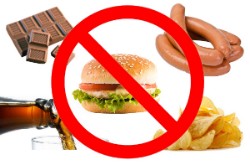 List products harmful to the liver
is as extensive as the allowed ones. Please note that eating some of the dishes from the list below is acceptable, but in limited quantities.
List products harmful to the liver
is as extensive as the allowed ones. Please note that eating some of the dishes from the list below is acceptable, but in limited quantities.
The conditions for the inclusion of a component in the diet are presented in parentheses next to the corresponding product.
If there are no brackets with information next to the product, then it is strictly forbidden to include this component in the menu.
| Product Categories | Prohibited products |
| Flour products and bread | Any pastry, yeast and fresh pastries, puff pastry and pies fried in butter, belyashi, pancakes, pancakes, chebureks, shawarma, products with cream and fillings are excluded |
| Cereals and porridges | Lentils, corn, pearl barley, barley groats, pumpkin seeds, sunflower seeds, legumes |
| Sweet | Halva, sherbet, waffles, desserts with cream and icing, chocolate, sweets with nuts, ice cream, cakes and pastries, popcorn, kozinaki, |
| Vegetables | Mushrooms, ginger root, green onions, radishes, asparagus, spinach, radish, parsley, dill (in large quantities), sorrel, corn, garlic (in large quantities), cabbage, pickled cucumbers, tomatoes, peppers |
| Fruits and berries (all sour varieties), nuts | Oranges (doctor's consultation is required), figs, grapes, lemon (a slice in tea is allowed), pomegranate, dates, almonds, walnuts, nutmeg (in large quantities), hazelnuts, peanuts, hazelnuts, black currant, red currant, white currant |
| Milk and dairy products (any products with a fat content above 6%) | Cottage cheese, milk, yogurt, kefir, fermented baked milk, hard spicy cheese varieties, salty cheese |
| Meat dishes | Mutton fat, beef fat, lard, pork, smoked meats, tongue, kidneys, liver, preservation, dried meat |
| Seafood and fish dishes (all fatty varieties) | Carp, sturgeon, salmon, catfish, beluga, mackerel, sevryuga, caviar, sushi, rolls (allowed only with dietary seafood or vegetable filling), crab sticks, octopus, salmon (in large quantities), shrimps in batter, fried shrimps |
| Drinks | Strong teas (of any variety), cocoa, hot chocolate, purchased juices, alcohol, coffee, sodas, purchased fruit drinks, energy drinks, cocktails |
| Eggs | Fried eggs in butter |
| Fats | Unrefined oils |
| Dressings and sauces | Sauces with a high content of pepper, ground pepper, spices for meat and fish dishes, mustard, ketchup, mayonnaise, adjika, any spices, purchased sauces and dressings, sour cream |
Sample menu for 7 days
For clarity, here is an approximate menu for each day of the week, which you can use as the basis of your diet to normalize and subsequently maintain proper liver function. You can change any of the days and points for yourself, based on the tables of allowed and prohibited products listed above. Remember that you need to divide all meals into 6-7 sets.
Monday
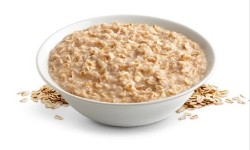
- Breakfast &8212; Oatmeal porridge on water, a couple of crackers, tea;
- Lunch &8212; Vegetable soup, a couple of steamed beef patties, compote;
- Afternoon snack (snack) &8212; Tea with baked pie;
- Dinner &8212; Mashed potatoes with meatballs, a couple of slices of dried bread, jelly.
Tuesday
- Breakfast &8212; Half-baked porridge, dry biscuits, a glass of rosehip broth;
- Lunch &8212; Steamed omelet with vegetables, diet bread, fruit compote;
- Snack &8212; Glass of low-fat kefir, biscotti;
- Dinner &8212; Baked pike perch with boiled rice, a slice of rye bread, herbal tea.
Wednesday
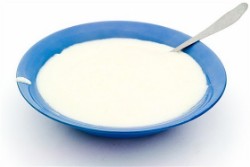
- Breakfast &8212; Semolina porridge, a glass of weak tea, a couple of pieces of Belevsky pastille;
- Lunch &8212; Borscht with low-fat sour cream, a couple of pieces of stale bread, dried fruit compote;
- Snack &8212; Jar of baby fruit puree;
- Dinner &8212; Vegetable casserole, diet bread.
Thursday
- Breakfast &8212; Natural yogurt with berries or fruits, marshmallows, cup of tea;
- Lunch &8212; Boiled buckwheat, steamed turkey cutlets, jelly;
- Snack &8212; Glass of low-fat fermented baked milk, banana;
- Dinner &8212; Spaghetti, a couple pieces of low-fat cheese, herbal drink.
Friday
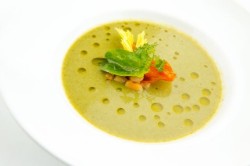
- Breakfast &8212; Casserole of cottage cheese and raisins, decoction of rosehip berries;
- Lunch &8212; Broccoli puree soup, a couple of slices of rye bread (can be in the form of breadcrumbs), tea;
- Snack &8212; A couple of slices of Belevskaya pastille, baby food, compote;
- Dinner &8212; Fish cutlets with a side dish of vegetables, dried bread, herbal drink.
Saturday
- Breakfast &8212; Wheat porridge, a glass of weak tea;
- Lunch &8212; Pumpkin steamed with honey, rosehip broth;
- Snack &8212; Fruit Pudding;
- Dinner &8212; Chicken breast with herbs, mashed potatoes, mint tea.
Sunday
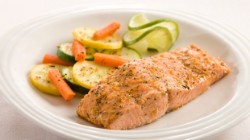
- Breakfast &8212; Fruit salad, diet bread, compote;
- Lunch &8212; Pumpkin Cream soup, vegetable salad, tea;
- Snack &8212; Cottage cheese mixture with fruits;
- Dinner &8212; Steamed trout with a side dish of vegetables, crackers, herbal decoction.
4 useful recipes
Dietary nutrition &8212; this is not a verdict yet. After all, you can eat very tasty on a diet and at the same time not torment your liver and digestion. Here are some recipes for interesting and healthy dishes that will help diversify your diet.
1. Diet goulash with prunes
This hearty and healthy dish will appeal to any gourmet.
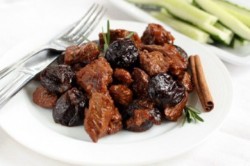 You will need :
You will need :
- Turkey meat (white) - 0.5 kg;
- Prunes &8212; 6-7 pcs;
- Flour &8212; 1 tablespoon;
- Butter &8212; 2 tablespoons;
- Milk &8212; 1 cup;
- Pepper and salt to taste.
Cooking process:
- Soak the prunes for about 60 minutes. After that, cut them into thin slices in the form of strips.
- Wash the meat, cut it into serving cubes, fry in a small amount of olive oil on both sides. After that, season the turkey with salt and pepper.
- Add chopped prunes to the meat, two tablespoons of milk, close the lid and simmer over low heat.
- In a clean bowl, fry the flour and butter until golden brown.
- Add the remaining milk to the mixture.
- Stir the mass and continue to cook until it becomes thick. Add the resulting sauce to the turkey.
- We continue to simmer everything until ready.
2. Buckwheat with dried apricots
Buckwheat is one of the the most beneficial cereals for liver health . The recipe with prunes will help to diversify the usual buckwheat porridge.
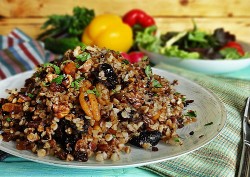 You will need:
You will need:
- Buckwheat groats &8212; 1 cup;
- Dried Apricots &8212; 100 g;
- Cinnamon &8212; 1 stick;
- Nutmeg &8212; on the tip of a knife;
- Salt &8212; to taste.
It is prepared like this:
- Wash the dried apricot slices, soak in water for half an hour.
- Pour the buckwheat into a dry frying pan and warm it up slightly.
- After that, add 2 cups of purified water to it and cook the porridge until fully cooked.
- After cooking, add a cinnamon stick to the cereal.
- Chop dried apricots and add to the boiling porridge (somewhere in the middle of the cooking process).
- Add nutmeg and salt to the mixture.
- As soon as the dish is ready, take out the cinnamon.
- Season the finished dish with a piece of butter.
3. Pesto sauce
This seasoning will be a great addition to spaghetti, rice or mashed potatoes. You can use it as a "putty" for dietary bread or crackers.
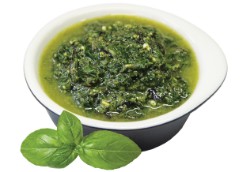 You will need:
You will need:
- Fresh Basil &8212; 1 large bunch;
- Parmesan- 40 g;
- Pine nuts &8212; 40 g;
- Olive oil &8212; 2-3 tablespoons;
- Lemon juice &8212; 1 tablespoon.
Cooking method:
- Rinse the basil branches under running water, shake off excess liquid.
- Pick the greens into the container in which you will cook the sauce.
- Add olive oil.
- With an immersion blender, begin to grind the mixture to a pulp.
- Fry the nuts in a dry pan until golden brown (but do not overdo it).
- Add the nuts to the green mush and continue to grind everything with a blender. By
- As soon as the mass becomes more or less homogeneous, pour the parmesan grated on a coarse grater. Keep kneading.
- Finally add lemon juice to the dressing, use a blender to mix it into the sauce.
The finished filling is stored for only 3-4 days. Be sure to store it in the refrigerator.
4. Soup with oatmeal
5 medicinal properties of oats for the liver we have reviewed in a separate article. The broth described below will help to diversify the list of first courses.
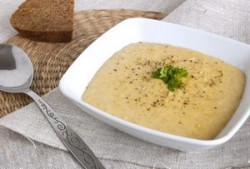 You will need:
You will need:
Potatoes &8212; 3 pieces;
Purified water &8212; 0.5 L;
Oat flakes &8212; 50 g.
Cooking process:
- Finely chop the potatoes, pour them into boiling water.
- Cook the mixture for 15-20 minutes, and then gradually add the oatmeal to the broth.
- Mix the soup well and leave to cook over low heat. At the end, add the herbs to taste.
The recipe can be transformed. For example, add oat flakes to vegetable broth or meat soup (based on turkey or chicken). You can also replace oatmeal with spelt or other cereals.
Conclusion
In order to keep the liver healthy (or help it regain its health), you need to put a lot of effort into it. First of all, it is worth starting with the correction of diet, lifestyle, and daily routine.
Change your daily menu: exclude all fatty, fried, canned and spicy dishes from it, get rid of carbonated drinks, purchased juices, products with a high content of preservatives, flavorings and sugar, forget about alcohol.
Carefully read the list of allowed foods for a sick liver, include them in your diet. And don't forget about the basic rules of the diet, nothing will work without them.
